At the wheel: Antony Ingram
Owned since: November 2020
Current condition: Remarkably original
Hands-on or hands-off? Mostly off – rotaries are best left to the professionals
Antony Ingram is Assistant Editor at Hagerty. He was once given a Toyota Paseo for free, but soon came to appreciate that the best things in life aren’t free, and promptly bought the Mazda RX-7 you see here. Scroll down to follow their journey.
4 February, 2021: Joining the rotary club
What the classic car market giveth with one hand, it taketh away with the other. Like most I’ve grown up surrounded by cars, waiting patiently for the moment a dream car from childhood would depreciate enough to perfectly intersect with my budget at a given stage in life.
It was tantalising watching the values fall, seeing Honda NSXs pop up for £15,000 and Renault Sport Clio V6s dip lower than you’d pay for a half-decent Clio Trophy these days. Then, they began climbing again, just as reality began to dawn: I wasn’t even close to having enough disposable income to buy one, let alone enough to then maintain the car after purchase. Values and budget never intersected; one curve merely followed the other; frustration grew.
How much is your car to insure? Find out in four easy steps.
Get a quote
Soon there was just one car left: one last Japanese icon from the “bubble era” that seemed achievable, a car that could hold its own with NSXs and Nissan Skylines – the Mazda RX-7. But even that was rising in value, as enthusiasts clamoured for the remaining examples.
I’ve had a fondness for Mazdas since owning my first MX-5 back in 2009. That was a car I bought mostly because it was an inexpensive way into something rear-wheel drive and had double the power of the Fiesta it was replacing.
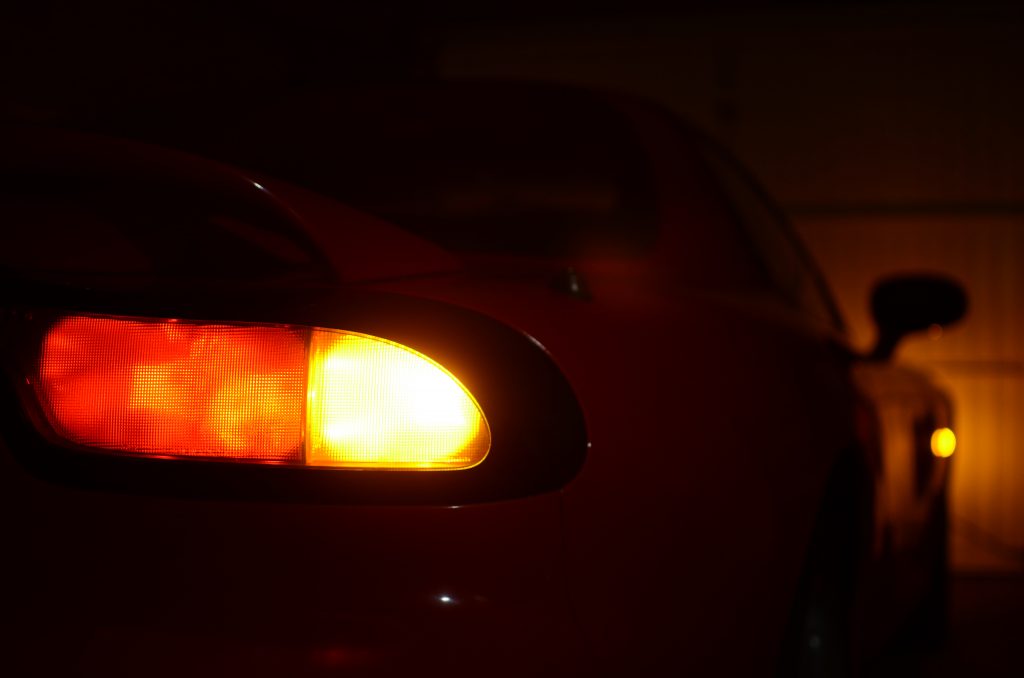

Its Mazda RX-7 big brother though had always been out of reach – a car that, in 2021 money, cost around £70,000 new, and was never something that could be run, like the MX-5, on a relative shoestring. Moreover, most examples that cropped up for sale were (usually tastelessly) modified. Given the “FD” RX-7’s needy reputation – it turns out sequentially-turbocharged rotary engines require plenty of maintenance, who knew? – taking on someone else’s project, however affordable, seemed wholly unwise.
I’d kept a beady eye on values then, assuming that like every other car on “the list” it would soon become unattainable. What I did not expect was a car to fall basically into my lap when I’d all but lost hope.
In one of the rare breaks between 2020 lockdowns I’d flown to Germany for a Mazda 100th anniversary event, at which several of the company’s past masters were available to drive. A red 1994 Mazda RX-7 was on the list, one of Mazda UK’s collection, though having driven it at a previous event I concentrated on other cars – a rare 929 coupe, a 10th Anniversary MX-5, a second-generation RX-7 convertible.
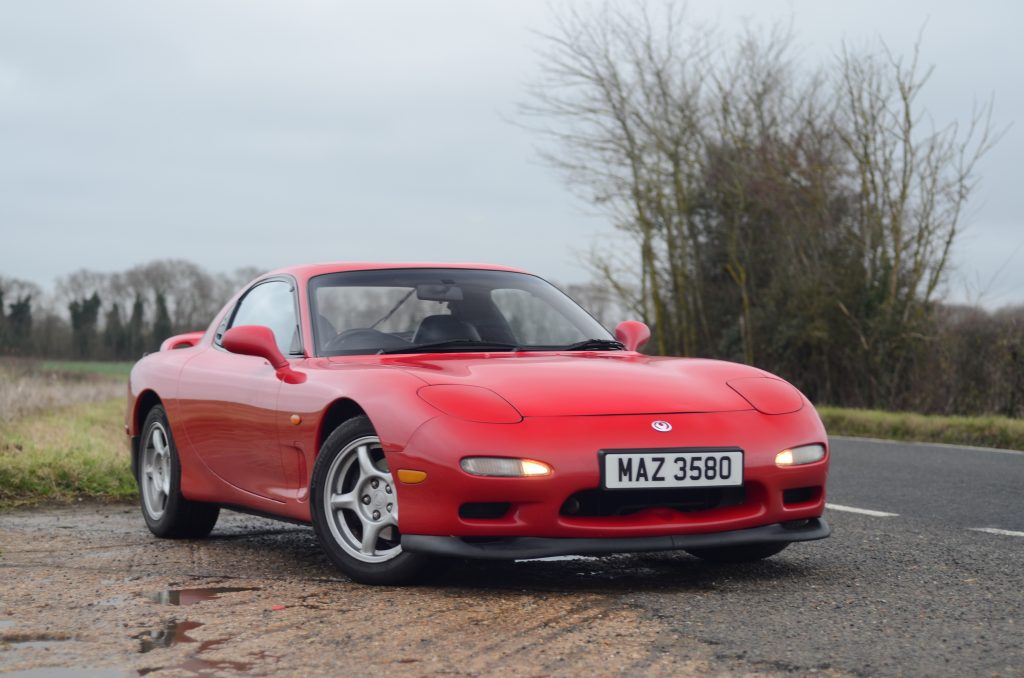
Then I caught wind of a rumour that one of the cars was for sale. My ears pricked up: Cars as original as those in manufacturer heritage fleets are rare on the open market, making them canny buys. I’d assumed that it would be one of the MX-5s (having sold my last one a few years ago, I was already itching for another), or perhaps the V6-engined MX-3 I’d actually tried to buy three or four years previous. A quick chat with the right person at Mazda revealed it was actually the red RX-7 – and the suggested price was one I genuinely couldn’t refuse. I offered to buy it on the spot.
I’ll admit to some nerves when finally arranging to pick the car up, last December. These cars do have a capital-R “Reputation”, and a preliminary test drive had revealed a few things that need attention – things, I’d add, that were reflected in the asking price. The car appears to be bypassing the second turbocharger, with little extra power apparent over 4500rpm, so that’s probably job number one. At least parts should be easy to come by.
But broadly, it drives as cleanly as its blissfully standard appearance would infer and, for the first time, my garage is occupied by a genuine dream car. Now I just need my budget to intersect with its thirst for fuel and oil. If you own an RX-7, or indeed any rotary, do share your experiences in the comments, below.
12 April, 2021: Charging around
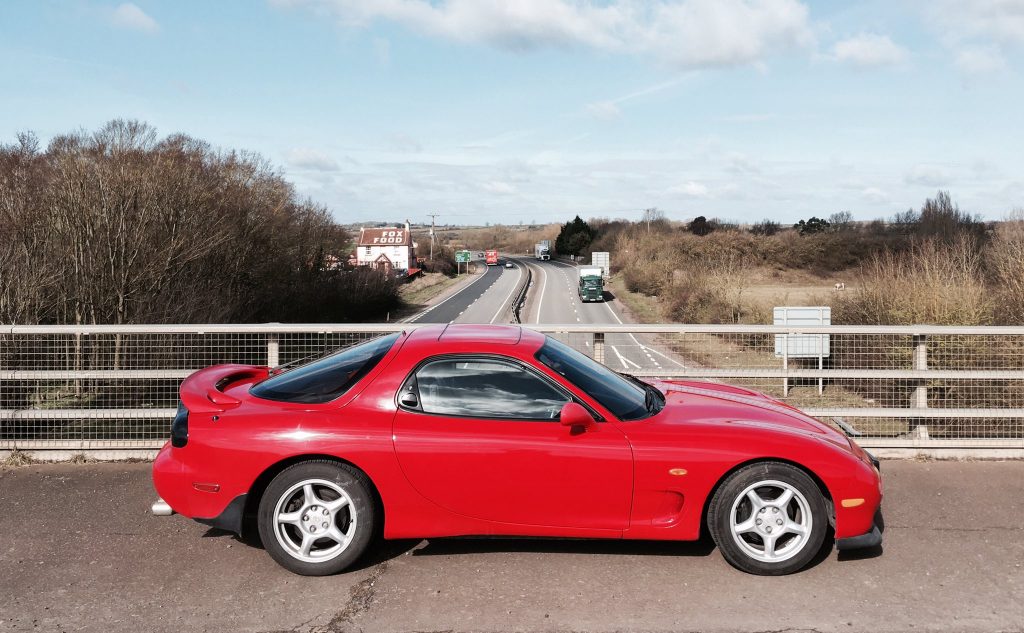
I knew what I was getting into when I bought an RX-7, but when the clouds finally dispersed long enough for dry, salt-free roads late in February, it was nevertheless still disappointing to excitedly turn the key to the sound of… absolutely nothing at all. Nada. Not even the click of a starter solenoid drawing those final few electrons.
It was of course a flat battery. The last time I’d driven the car was on New Year’s Day, and in a fit of optimism I’d avoided disconnecting the battery assuming that, at some point over the course of early 2021, there’d be a clear, dry weekend on which to give the car a lockdown-friendly but vital fluid-circulating spin.
The Mazda had lulled me into a false sense of security though, because each time I’d popped into the garage – a spot of cleaning here, some idle staring at Hiroshima’s bubble-era beauty there – the immobiliser light had been glinting brightly from the interior, suggesting all was well.
This isn’t my first rodeo though and I’ve had a battery charger and conditioner lying around the garage for years, ready to dispense the elixir of carefully-managed electricity to large, useless lumps of lead-acid. It took a couple of days to bring it back from the brink and then I let it run a top-up programme until the following weekend. A blinking green light signalled success.
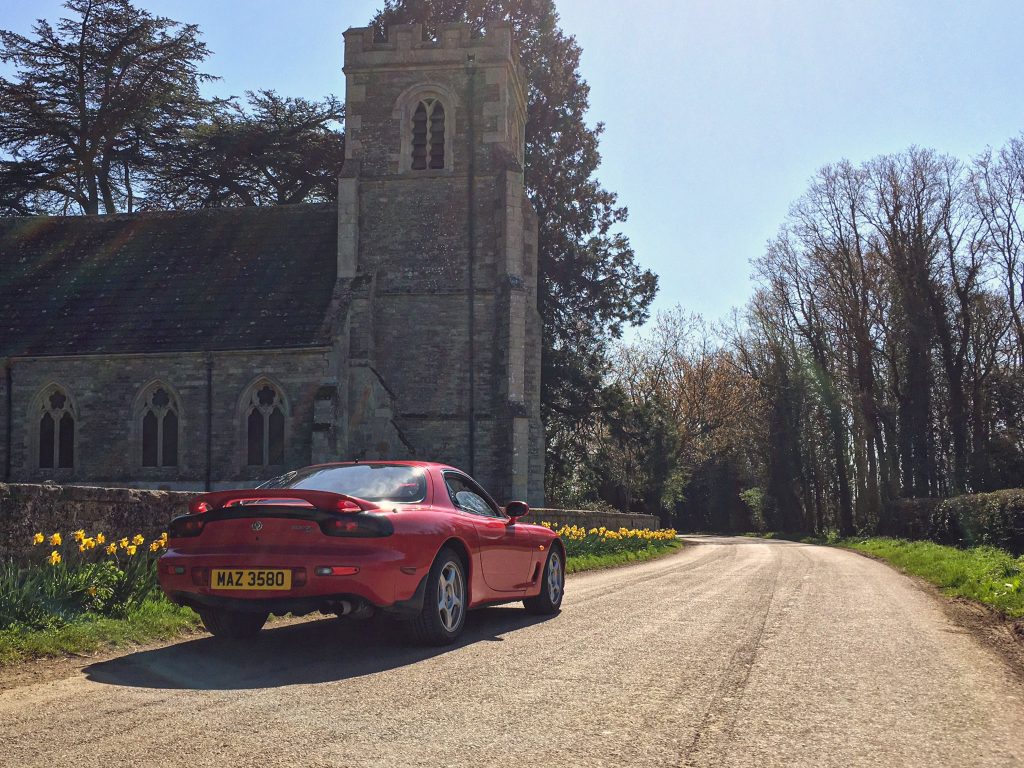
And wouldn’t you know it, the immobiliser deactivated, the car started up, and the only sign something was amiss was the string of zeroes on the trip computer. A celebratory but unspectacular drive followed just to check everything was A-okay, along with a distressingly expensive top-up of the 76-litre tank.
With the weather picking up I’ve been able to go for a few more drives since. It’ll take a trackday or a good drive on roads more spectacular than Northamptonshire can offer to really get under its skin, but I feel like I’m beginning to peel back the RX-7’s layers.
It’s capable in the corners for a start; tiny dimensions (it’s smaller in length, width and height than a 987 Porsche Cayman), modest weight (1310kg, says the brochure, so also lighter than a Cayman) and fairly meaty tyres (225 section on 16-inch wheels) seem to bond it to the road in a way I’ve not experienced in cars of a similar vintage.
The control weights are spot-on too and the smoothness of that engine – even though it needs some attention to deliver its full output (more on that at a later date) – give it a feeling of integrity that’s unexpected given the reputation of rotary cars for being a bit flaky. I’m often wary of driving hero cars, let alone owning them, but so far the RX-7 is more than living up to expectations. When the battery isn’t flat, anyway.
20 July, 2021: No, it didn’t blow up
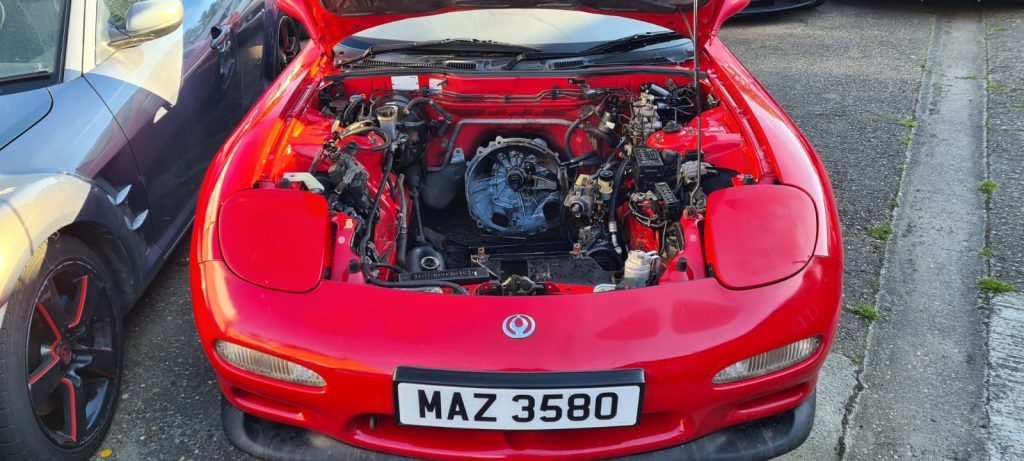
I now own two cars with which I feel the need to qualify their existence upon introduction. The first was my Toyota Paseo daily driver, perhaps the most unexceptional of the 1990s coupe offerings. Its unloved status, plus its slightly rough condition with peeling lacquer and a now quite rusty dent in one door, means I feel obliged to introduce its presence in my life with “I got it for free”.
The Mazda though needs its own qualifier as, for the past month, the car has undergone an engine rebuild. I knew it was coming, you probably knew it was coming, but it’s what you might call a preventative measure.
A compression test back in May suggested the infamous rotor tip seals weren’t long for this world. Since I’d budgeted for this kind of work when buying the car – despite my excitement, I did go into this purchase with eyes wide open – I figured there was no time like the present and booked the car in to HME Rotary in Coventry for the job that all rotary-engined cars will one day undergo.
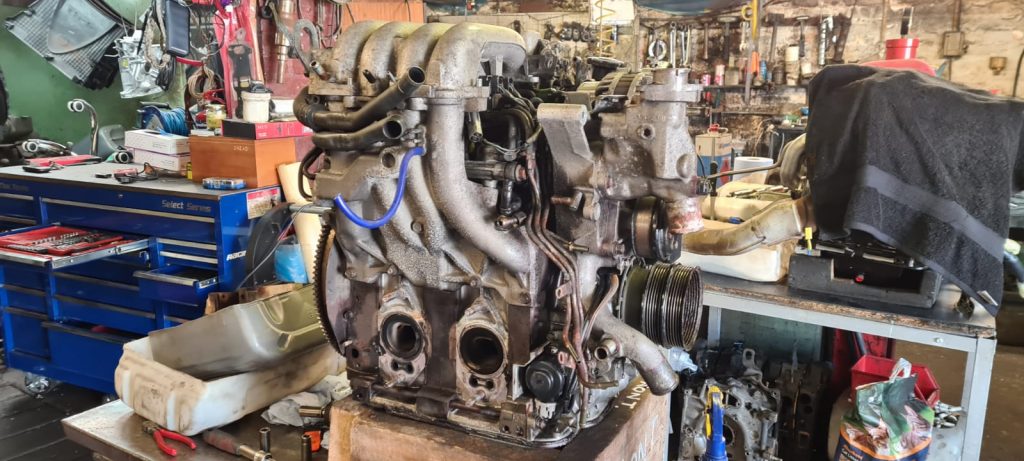
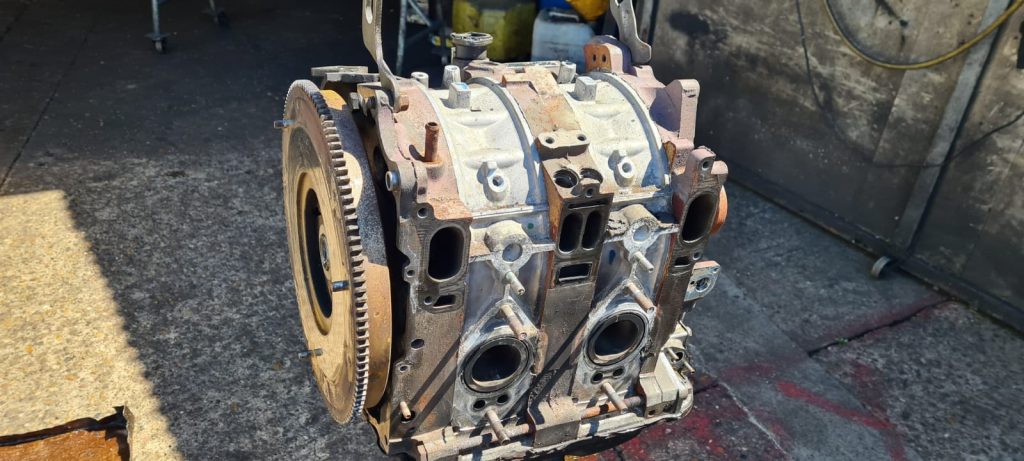
It was a job even finding a specialist who’d work on an RX-7, with most concentrating on the more affordable and much more numerous RX-8, but HME stood out for its long experience with Wankel engines, stretching back to the 1970s. Given the company has tackled everything from the expected RX-7s to the vanishingly rare Citroën GS Bitrotor and Suzuki RE-5 motorcycle, Mick Hurley and his team seemed like a safe bet.
Along with the rebuild, it’d be a chance to investigate and perhaps solve some of the other issues I’d experienced in recent months, such as a lack of boost at high revs, some stuttering under load, and most recently, an increasingly recalcitrant starter motor.
With the engine out of the car and on the bench, Hurley quickly identified some of the issues. Thankfully, the turbos themselves appear to be fine – the car only ever smoked a little at idle, so I figured as much – and the boost issues seem instead to have been a result of numerous collapsed, split, crusty or melted pipes in the car’s underbonnet “rat’s nest”.
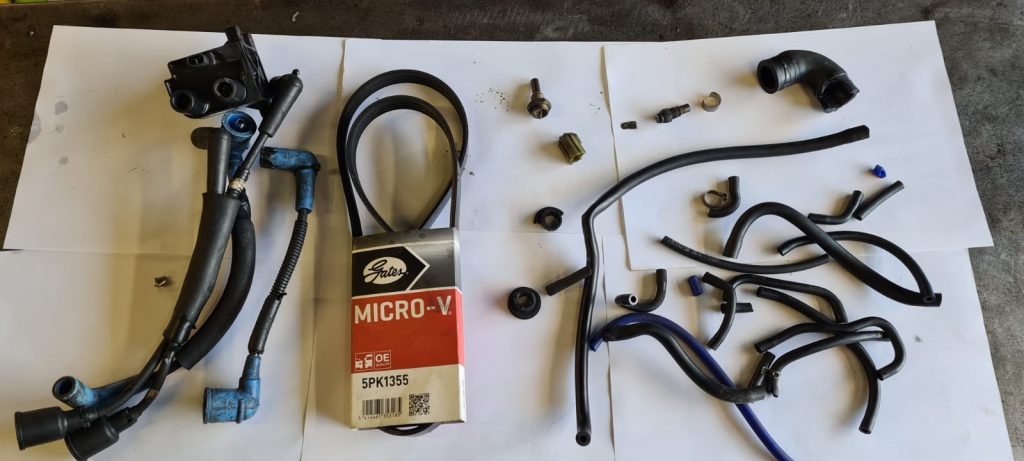
The coil was effectively toasted too, and that’s been replaced, along with the spark plugs and HT leads. New-old stock starter motors are basically unavailable now – predictably, they’re not shared with any more humdrum Mazda – so a reconditioned one went in instead, while a bunch of other ancillaries and of course new fluids should keep the car operating as it should until the next service.
As I type, the car is currently within the first 500 miles of its running-in period before an oil change, and I’m limited to an excruciatingly low 4000rpm for a thousand miles after that. I’ll reserve judgement on the improvements until the next update then – provided I’ve covered enough miles – but in the meantime, I’ll just have to keep everyone informed that it didn’t actually blow up…
1 March, 2022: A thousand down, five hundred to go
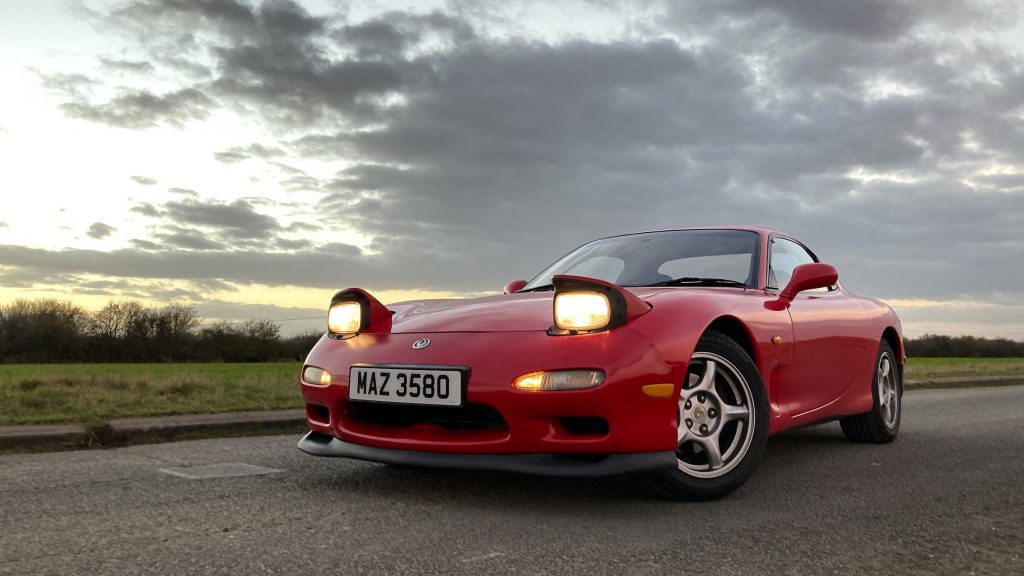
Whatever your car revs to, half it. Then imagine what it would be like sticking to those revs for the next seven or eight months, and you’ll have some idea of the frustration of the Mazda’s running-in period, following its engine rebuild.
With an engine that will happily spin well past its 7000rpm red line, and whose power band only starts in earnest at around 2500rpm, the result is a car that needs miles adding as quickly as possible so I can experience its full potential, but also one that hasn’t actually been a great deal of fun to own since July last year.
The RX-7 is still perfectly driveable below 4000rpm of course, and given its gearing, would still – where the law allows, as brochures used to say – hit 100mph or so in top.
But given it’s happiest above 2500rpm (in more ways than one – more on that in a sec), being limited to 4000rpm means an effective window of driveability of only about 1500rpm. Even my daily-driven diesel Smart allows a useful range 500rpm wider than that.
It can get through that 1500rpm pretty quickly, so getting up to speed feels like going through a 12-speed gearbox in a truck. Brrrr-gear-brrrr-gear-brrrr-gear-brrrr-gear… oh, already at the speed limit are we?
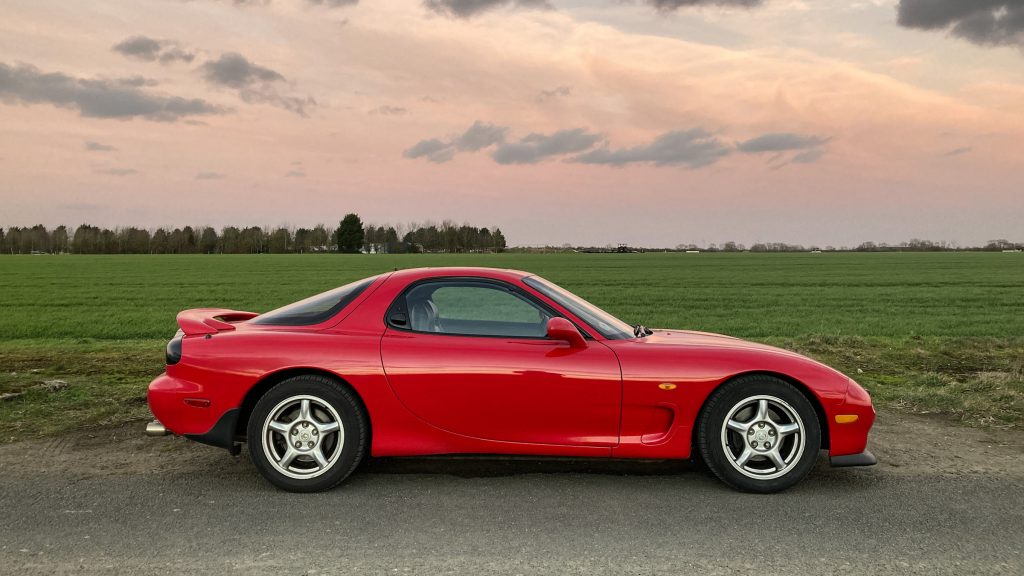
2021’s fuel shortage and subsequent spike in prices hasn’t helped the motivation for driving, and nor has winter. Sticking a hundred quid in the tank to go maybe 300 miles stings a bit, and while the RX-7’s thirst doesn’t bother me per se – I’m unlikely to do more than a few thousand miles per year in it – running-in miles aren’t exactly fun miles. Likewise, while I’m trying not to be too precious about bad weather, I’d at least like to enjoy the thing if it’s going to rot away in the salt.
It’s all just part of the game, of course. And slowly but surely I’ve been ticking off the distance, on dry weekends, or when my wallet’s been having things just a bit too easy.
The first 500 passed between July’s rebuild and December, when HME Rotary took the car back for a quick checkup, oil change and idle adjustment. I’ve done another 600 or so since, so just 400 more to go before another oil change service at HME.
At the same time, I’ll get them to investigate the issue I hinted at earlier. Below the engine’s sweet spot, and under higher load, such as up a motorway incline, the engine will intermittently stutter, as if it’s not getting quite enough fuel. A downchange and a rev seems to clear it quickly. Part of me suspects throttle position sensor (old electronics can be flaky), or perhaps something as simple as a clogged fuel filter.
Either way, it needs sorting, so the next 400 miles can’t come soon enough. There’s half of the rev counter still waiting to be explored…
25 October, 2022: So here’s the thing…
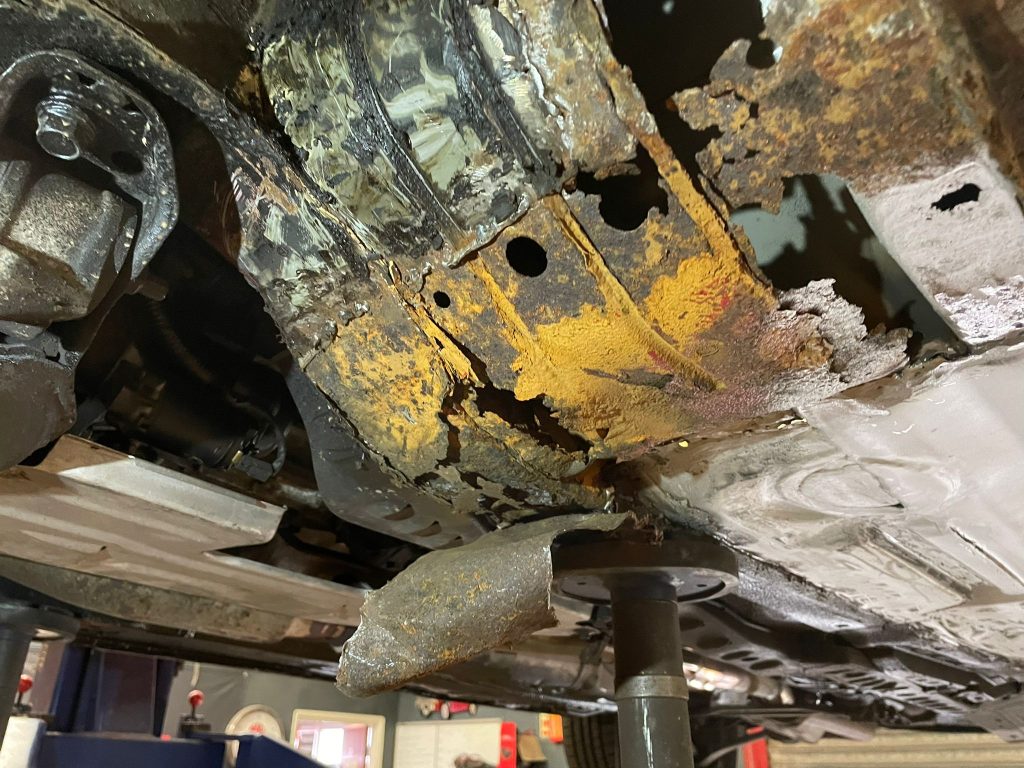
Regular readers might have noticed the absence of a certain red Japanese sports car on these pages in recent months. In fact, it’s been nearly eight months since I last wrote about the RX-7. Predictably, there is a reason for this.
The good news is, the running-in process went without a hitch. Well, I assume it did, because in June, at nearly 1500 miles on the dot, I drove through the gates at HME Rotary in Coventry for its post-running-in service, and I’ve not so much as sat in the driver’s seat since.
It relates, in a long-winded way, to the car’s MOT test, carried out while it was in HME’s care. Unfortunately, the car failed. One thing was easily fixed, the other cluster of things not so much.
The easy fix – albeit not a cheap one – was a new catalytic converter, as the Mazda failed its emissions test. Given what rotaries kick out I’m guessing it’d had a hard life, and with the last 1500 miles run at fairly low revs, it hadn’t really had a good blow-through in at least a year either.
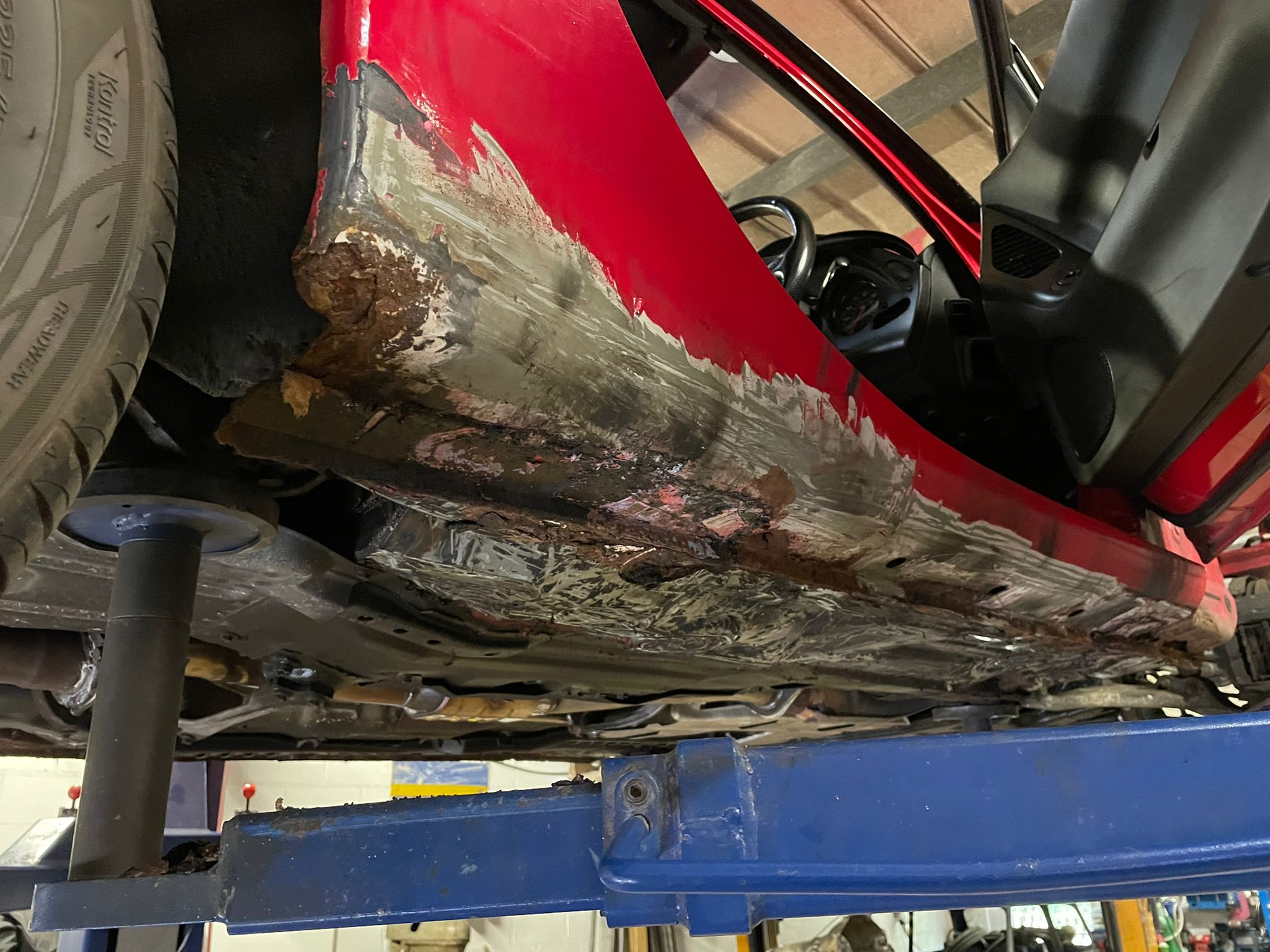
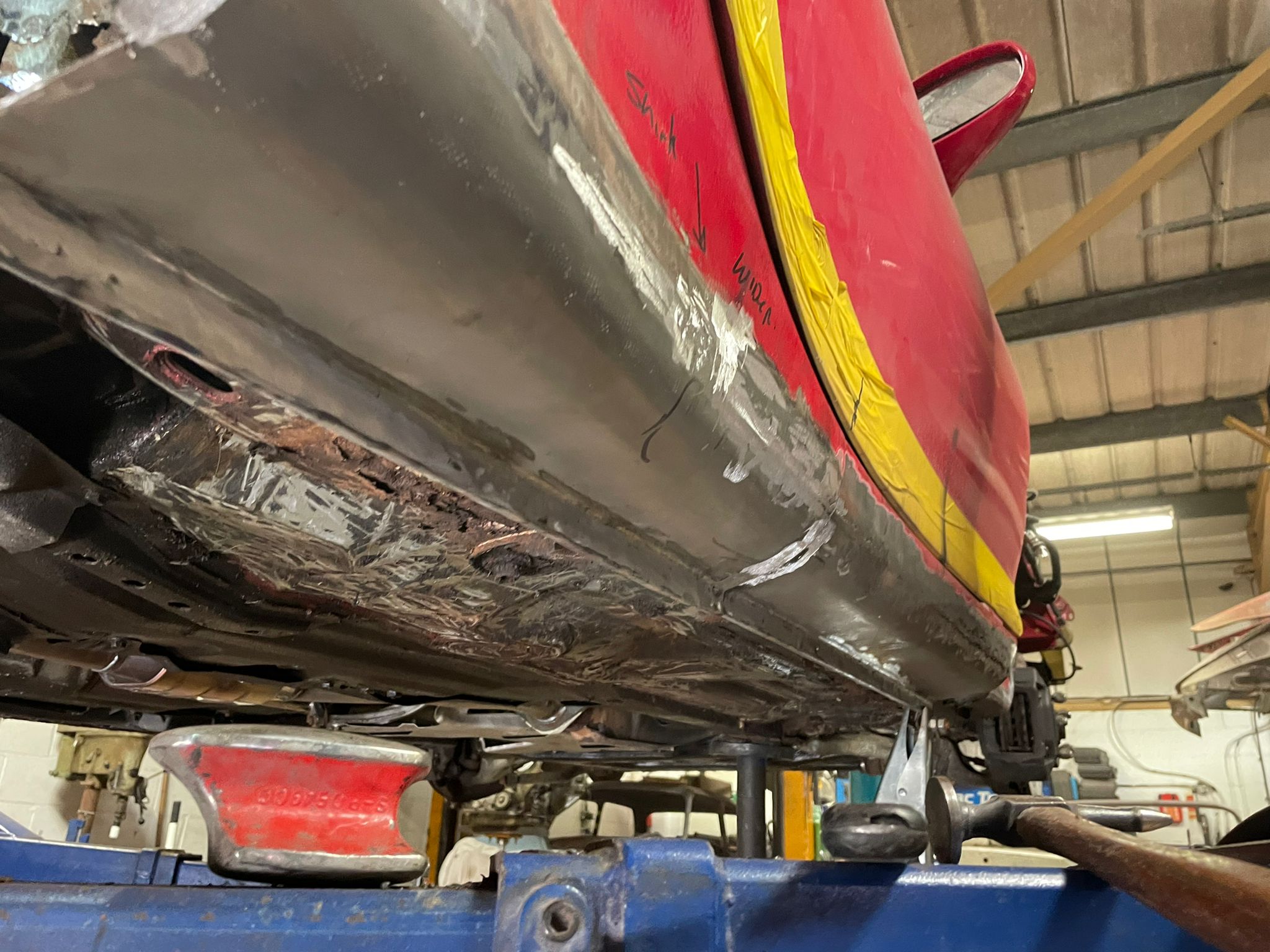
Wallet relieved of the better part of 800 quid for a new cat and a few other attention areas, the bigger issue was several failure marks on corrosion. I’d say that the British weather had finally caught up to it after all these years, but I think it’s been there before, as the MOT tester and HME found evidence of previous slapdash repairs, and these were as much at fault as Mazda’s own factory handiwork.
HME laid things bare: I could have everything just patched up again, but the car would probably need some proper metalwork at some stage anyway – so they advised me to start hunting for bodyshops.
This turned into its own heart-stopping palaver, as restoration specialists are apparently in some demand right now. One place suggested by a couple of acquaintances feigned interest and then went completely quiet, and another apologised for being busy, suggesting they could only fit the car in by summer 2023… a whole year away at the time.
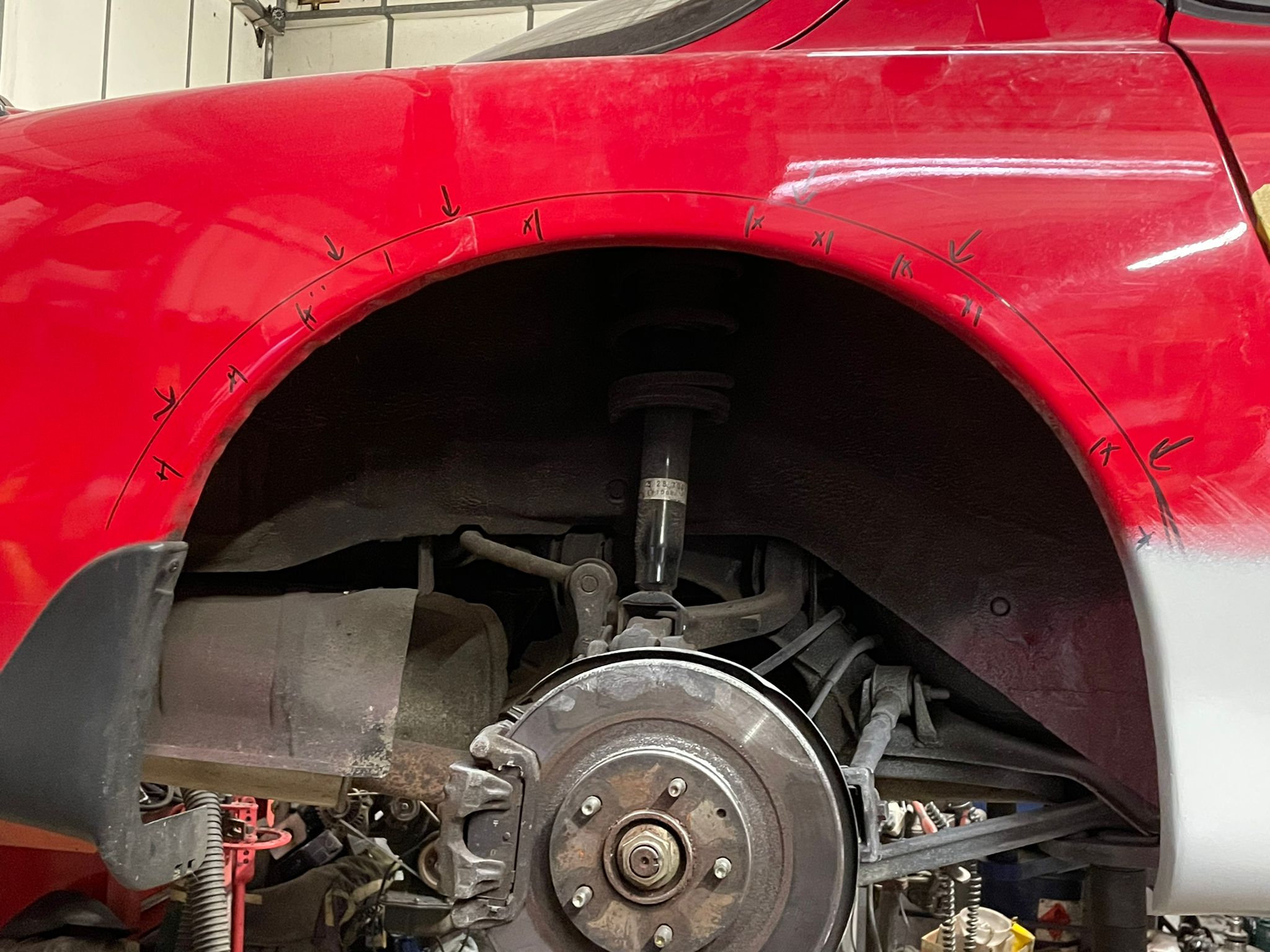
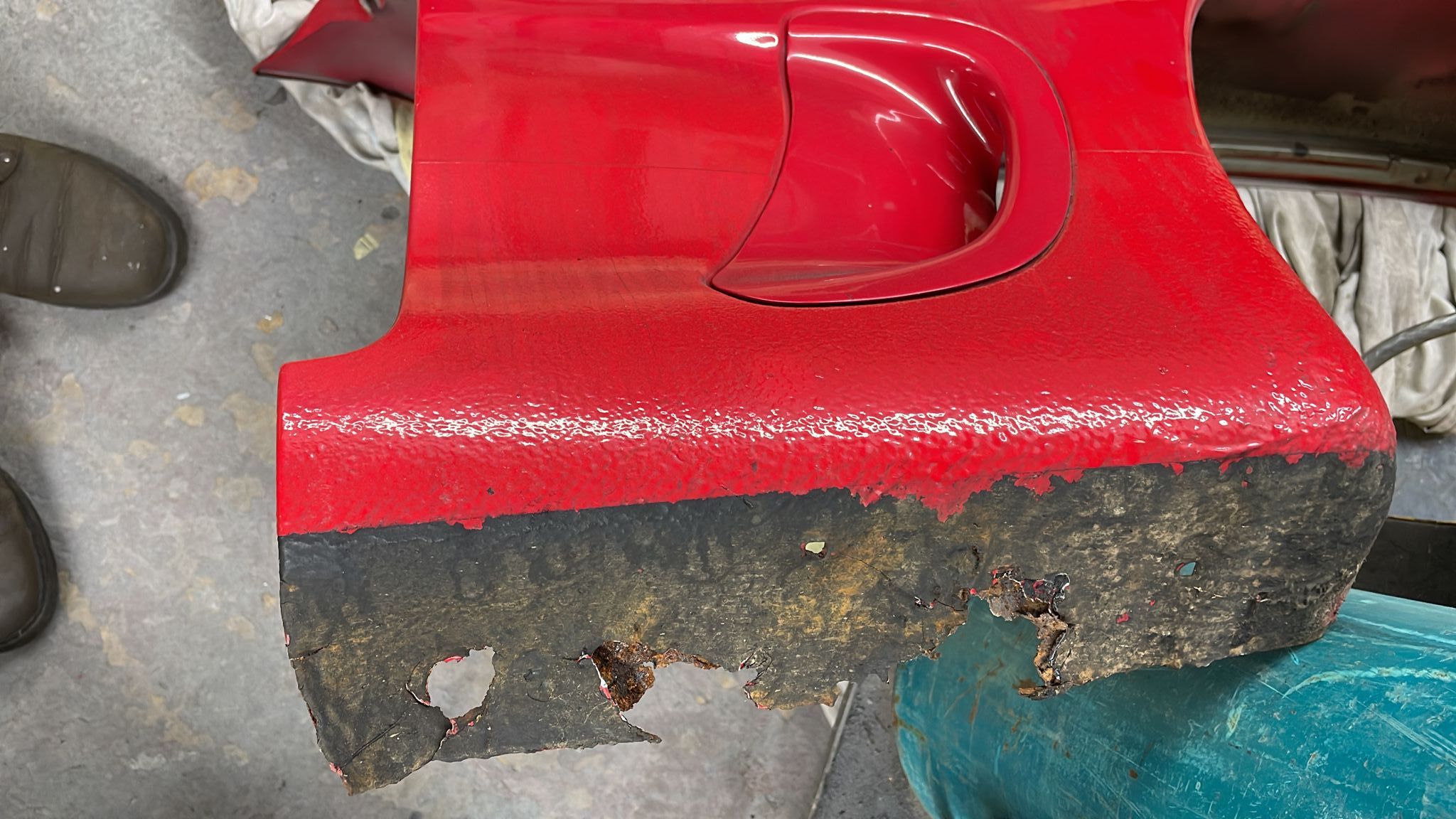
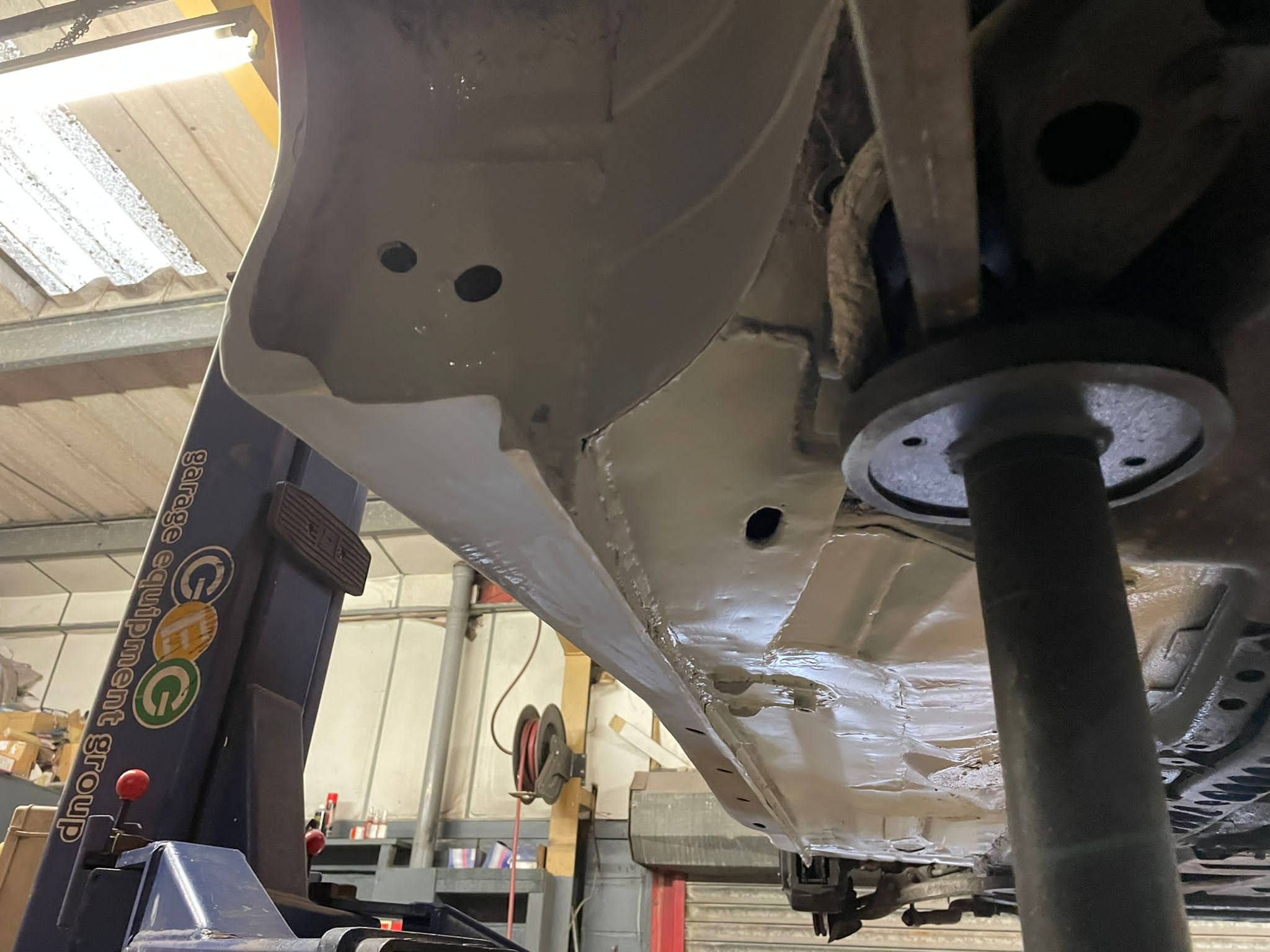
Before the palpitations really started, another nearby specialist finally got back in touch and could take the car in just a couple of weeks. Duly booked – after spending several hundred quid more to put the car on a trailer, have it stored for a week, and then dropped off at the bodyshop – it’s been there ever since.
I won’t reveal just yet who is doing the work – that can wait until the car is back on its wheels – though the shots I’ve seen so far are very promising indeed. There was some quite significant corrosion, and with each photo they send through, it’s being replaced by clean, treated, and carefully painted metal.
That’s just as well given how much it’s already cost, but those of you who’ve had cars professionally restored in the past will appreciate just how excruciating those numbers can be, and why I’ll probably refrain from breaking down the bill until such a time as I finally sell the thing…
31 January, 2023: Done (ish…)
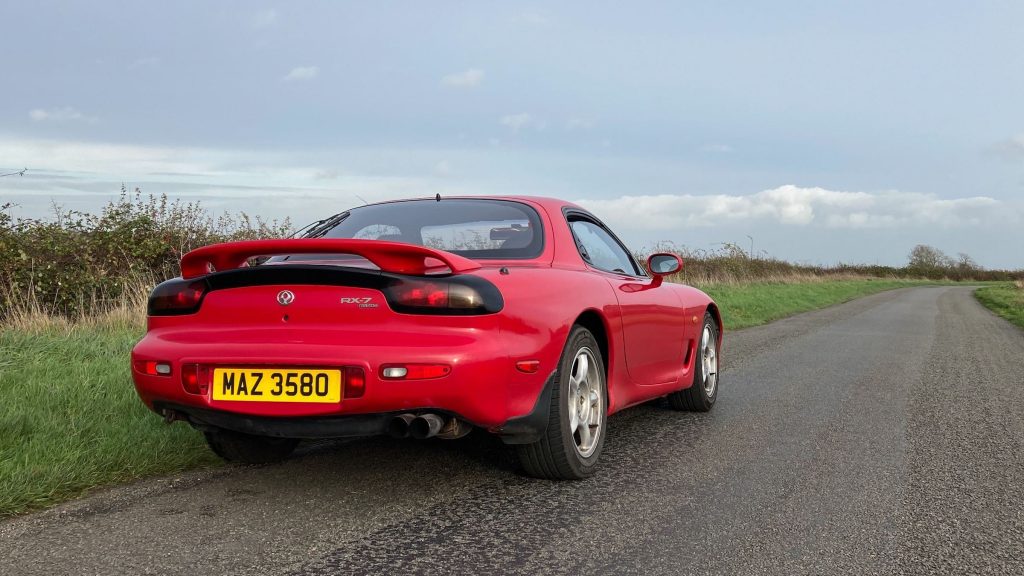
Finally, it’s done. Well, structurally at least. In the end, the Mazda spent late June to late November in the body shop, five months that should add many years to the car’s life, and make every drive in less than clement weather (and every subsequent MOT!) slightly less stressful than it might be, knowing the car is so much better protected than it was.
I entrusted the car to Tony Russello at Wheels In Motion, in Milton Keynes, on the recommendation of occasional Hagerty contributor Lewis Kingston, who’d had one or two cars fettled there in the past.
There’s no need for suspense here as you can see the photos; the car looks great. It didn’t look too shabby topside before, but as the work escalated, Russello inevitably needed to tackle more and more exterior panels until only the tailgate, bonnet, and both bumpers were left untouched.
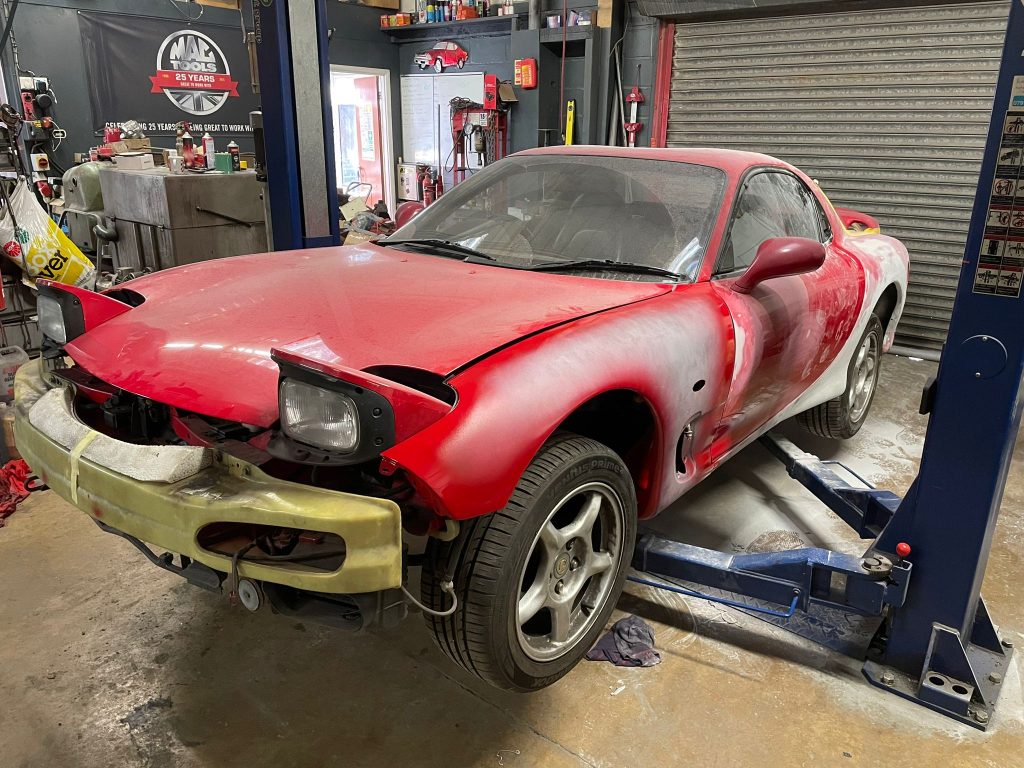
I was worried that these unpainted parts (a budgetary concern more than anything, as paintwork gets wildly expensive) might look several shades different from the fresh panels. As you can see in the natural daylight shots, there’s definitely a difference, but the match is close enough that it doesn’t really bother me.
The best work is underneath though, and naturally that’s the bit you can’t really see. Luckily, Russello photographed the whole process, sending me regular updates and detailing the iron oxide chaos that had taken over underneath the heavily-undersealed metalwork (see my previous update above).
The extent of it was surprising. I’d been under it when it was first up on the ramps prior to its engine rebuild and it looked fine to me. The coating underneath had clearly been enough to dupe a few MOT testers over the years though, as there’s no way it should have got as bad as it did otherwise. (It’s also a great reminder that a clean MOT should never be taken at face value.)
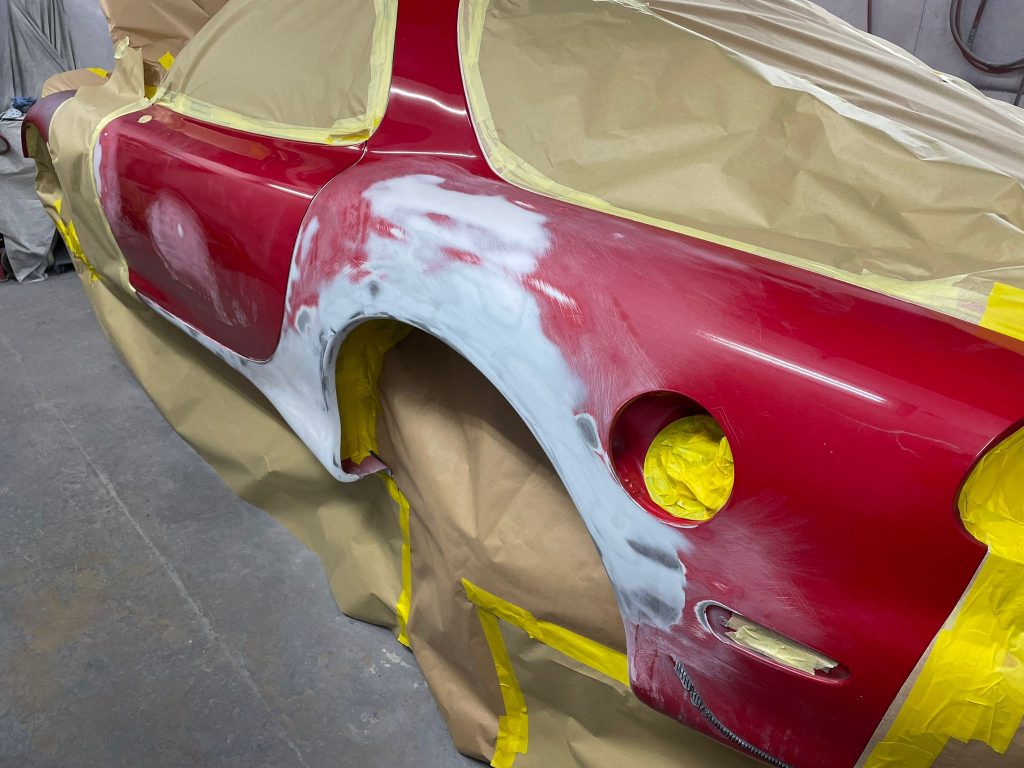
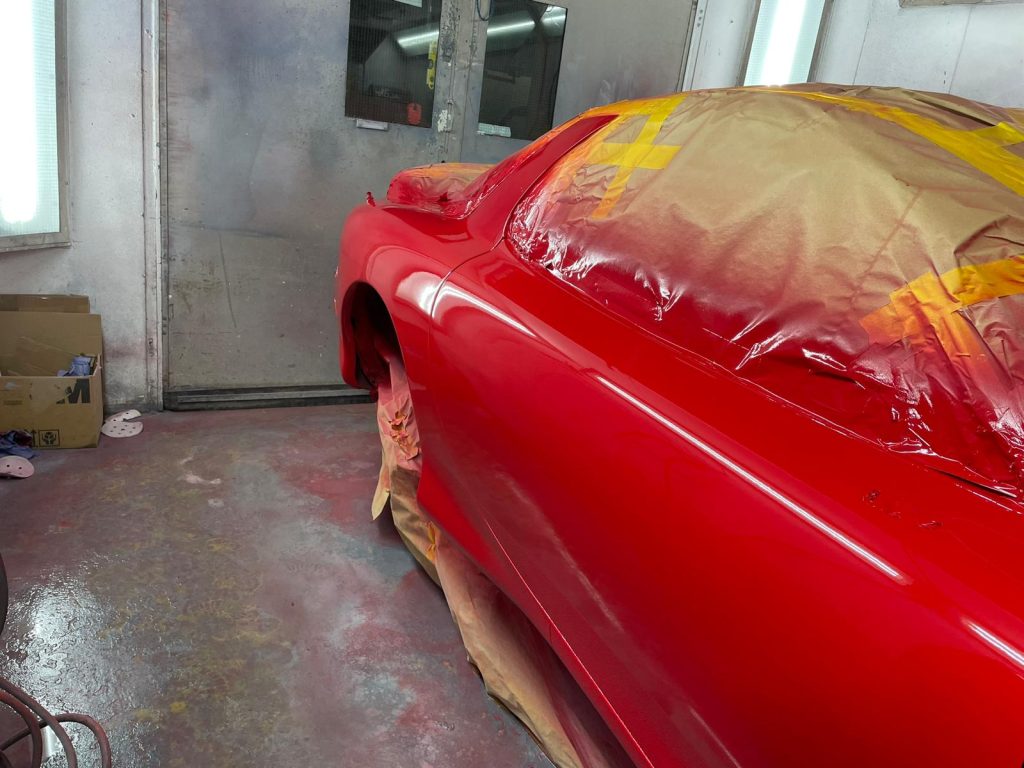
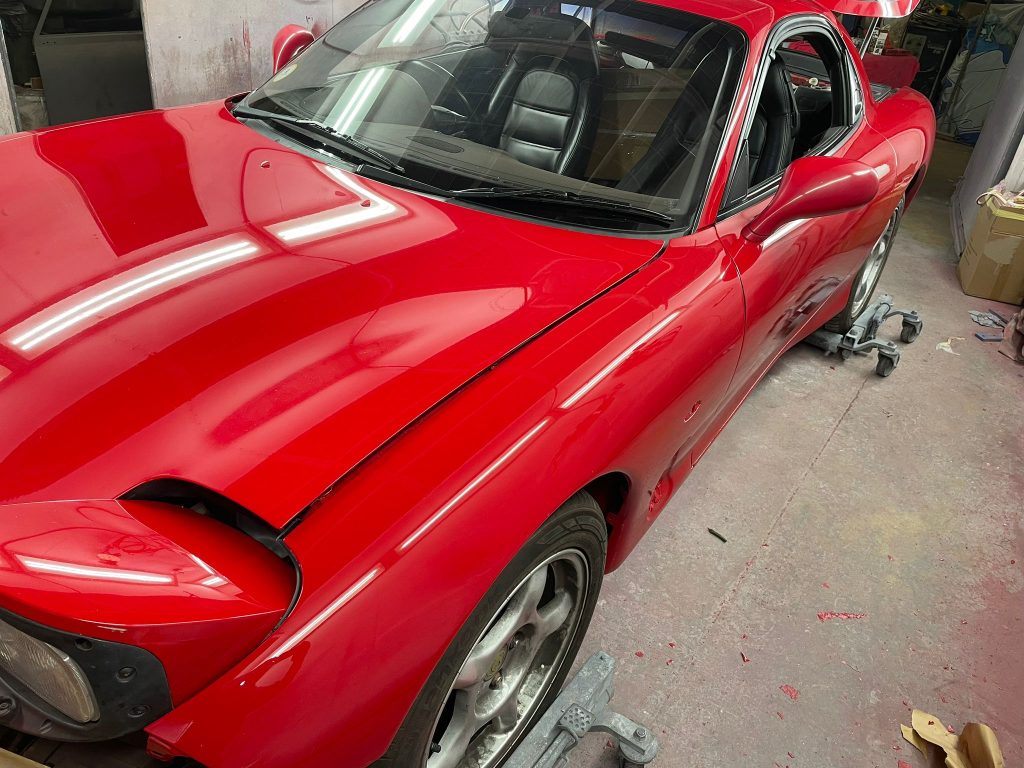
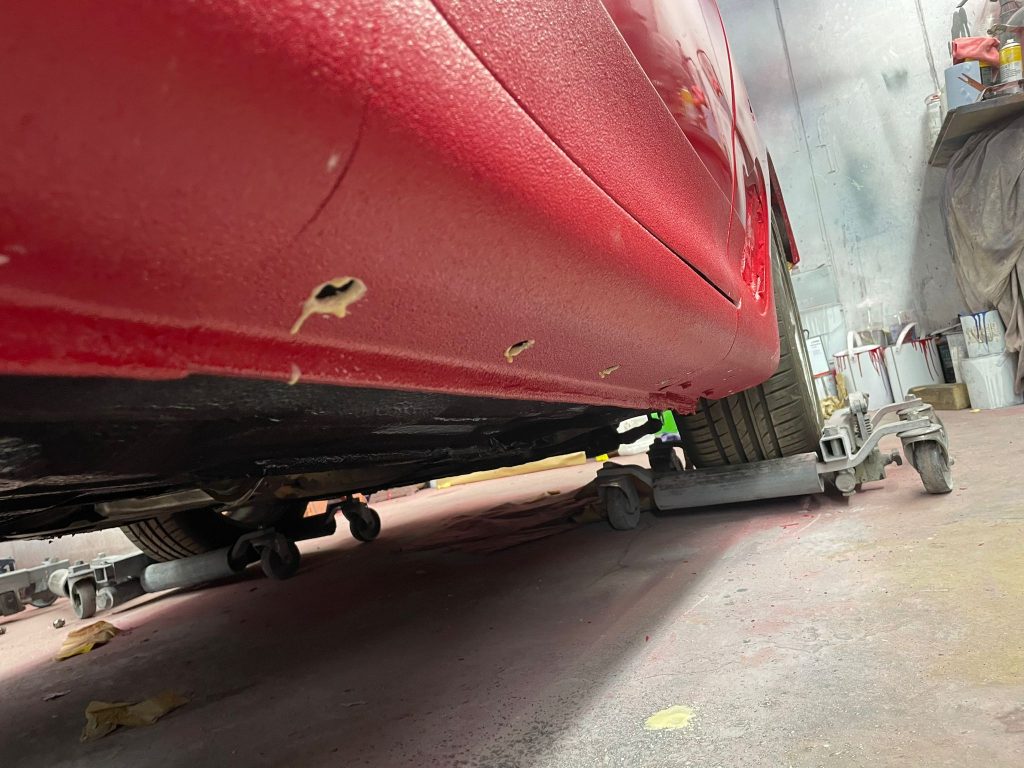
Russello had a real job on his hands though, as Mazda doesn’t (yet) make replacement panels for the FD generation RX-7, despite its high profile in enthusiast circles. This meant, one replacement front wing aside (which we found on eBay, and I quickly snapped up), Russello had to hand-shape every single piece of metal he replaced. And this is one curvy car in places, so it involved a lot more than just bending stuff in half or stamping a few beads into flat panels.
As you can see from the photos, once the metalwork was done, each area was coated in primer, painted in the original Vintage Red, and in relevant places, such as the underside and inner wheel arches, covered in a thick layer of a chip-resistant coating. The lower half of each sill, and each door, also got a new layer of stone-chip paint, just as the original car had.
Ensuring a good blend between panels, Russello eventually painted every wing, each door and even the roof, as well as giving the spoiler some attention – previously the most faded part of the exterior. Back went all the rubber seals, panels, and interior trim – and if you’ll excuse my lacklustre photos, here’s the result.
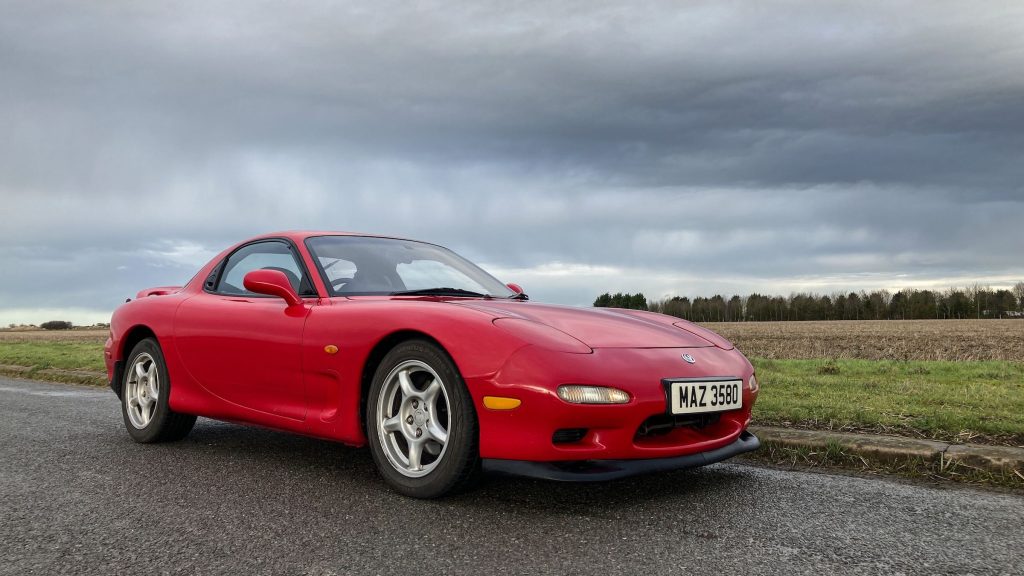
While my bank account feels like it’s been roughed up in a dark alley, the car probably hasn’t looked better for quite some time, and there’s a satisfaction knowing I’ve had the job done properly, rather than adding to a patchwork of dodgy MOT-standard repairs.
This may be all in my head too, but I could swear the car feels more solid after the work. These RX-7s are known to rattle a bit (even from new), but I’m sure some of the squeaks and shudders have disappeared. Whether it’s the fact the chassis is now solid again, or because Russello re-fitted a bunch of the trim, or it’s just my imagination, I’m happy to accept the result.
Now, all I’d like to do is drive it, but there’s still one more thing that really needs sorting first. A year of low-revs running in and then five months of sitting in a workshop meant that initially the 1.3-litre rotary felt a bit spluttery and stuttery at idle, which made sense. But after a few hundred miles now it still has a bit of a stumbling issue sometimes under acceleration, something it had not just pre-bodywork, but pre-rebuild too.
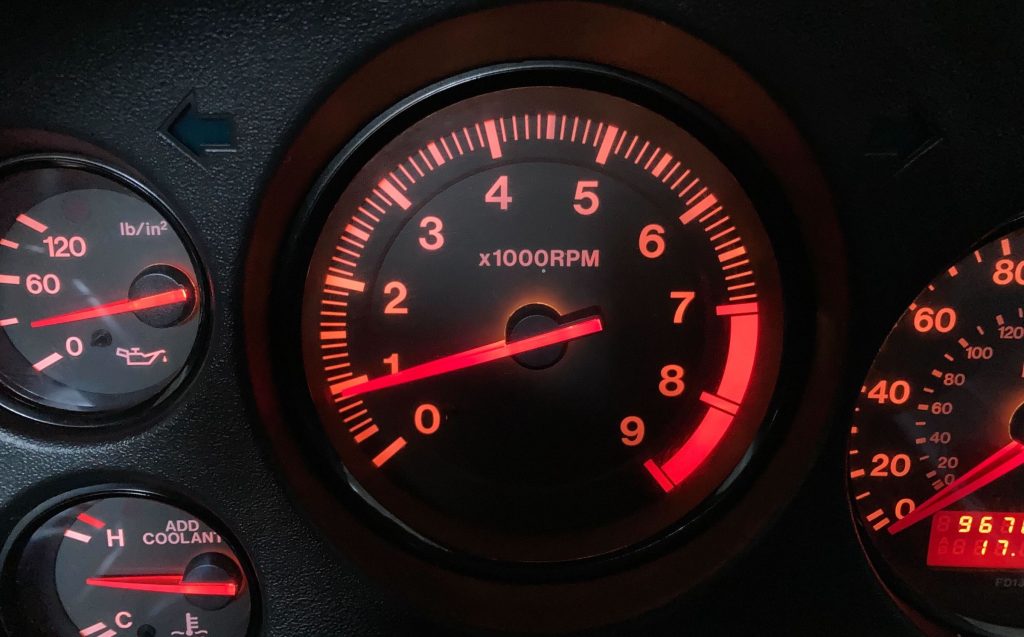
Initially at least I thought the solution might just have been a “Tokyo tune-up” to burn off anything that shouldn’t be there and prevent the plugs from fouling up – as good an excuse as any to finally use a few more revs after last year’s rebuild.
But the problem seems liable to strike randomly, including occasionally at idle. My new suspicion is some kind of fuelling issue – filter, lines, injectors perhaps – so it looks like I’m not quite out of the woods just yet…
Tweet to @antonywrites Follow @antonywrites
RX-7 fan? Bookmark this page as Antony will regularly report on his Mazda RX-7 FD.
